You may be wondering what embroidered QR code patches are, how they work, and what kind of marketing impact they can have. Read on to learn more.
Have you ever noticed those cute little customized embroidered patches on bags or jackets?
Yes, they are getting technologically advanced! People used to like these patches a lot because they looked good and were simple to use. They now have scannable QR code patches on them, which makes them even more awesome.
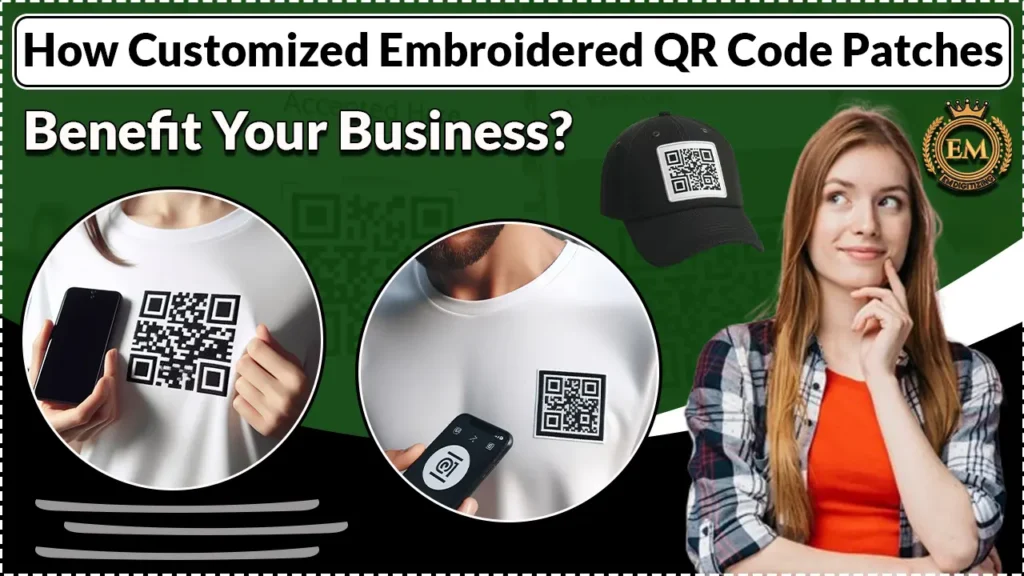
Have you ever thought about how the Internet can help companies share entertaining stories with their customers?
Well, it’s an excellent spot for all kinds of businesses to show off their products. To get your attention, they use fun things like social media, unique movies, interesting blogs, and excellent articles.
But hold on, there’s something really cool new in town!
How Customized Embroidered QR Code Patches Benefit Your Business?
What Are Scannable QR Code Patches?
Similar to regular QR codes, customized QR code patches are a new type of patches that are stitched with two-dimensional QR codes that can be scanned. These patches usually have black and white patterns on them, but they can be made with different color combos as well.
One great thing about embroidery patches is that you can put your company’s brand inside the codes. These patches have interactive QR codes that users may scan to access particular websites or digital content, much like a bridge to other online resources.
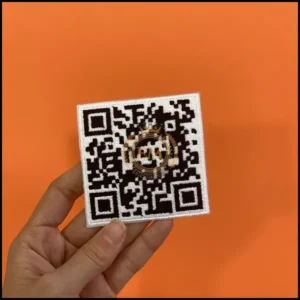
For instance, an applicant who scans an embroidered QR code can send it to a product description website where they can learn more about the features of the product. QR codes are becoming increasingly popular, especially among marketing and business people, because they are small, flexible, and cheap.
Key Features of Embroidered QR Code Patches:
- Compact and versatile
- Incorporate company logo
- Direct link to online resources
- Cost-effective promotion
Is There Anything Else You Can Do With An Embroidered QR Code?
Embroidered QR codes provide numerous opportunities for increasing brand visibility and customer interaction. You can use these codes in these two effective ways:
1. QR Code Cap Embroidery:
Caps can be handy for making your branding campaign stronger. Embroidering QR codes onto caps encourages mobile interaction and gives your target audience easy access to information about your products and services.
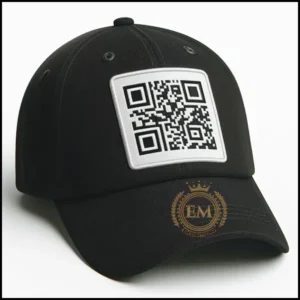
2. QR Code Left Chest Embroidery:
Employee uniforms make great brand ambassadors. You can further expand the reach of your brand by precisely embroidering QR codes on various types of business apparel with left chest embroidery digitizing.
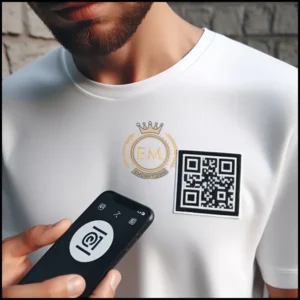
Good News: You can contact EMdigitizing for QR code left chest and cap embroidery digitizing services. We convert them into a digital file that any computerized embroidery machine can read. Our team also ensures the quality of the final design.
What Are The Benefits Of Embroidered QR Code Patches For Your Business?
In a competitive market where customers have several options, you need to be as smart as a fox regarding your growth plans because getting people’s attention can be hard.
Digital technology has completely changed the game, and you could be missing out on a goldmine if you’re not using mobile-friendly technology. When that happens, interactive embroidered QR code patches are the best way to show off your great products or services in style to your ideal customers.
Here are some truly amazing things you can do with these QR code changes to make them work like magic for your business.
Product Launch Activities:
Are you going to launch a fresh clothing line in the fashion world?
The good news is that you have a fantastic opportunity to reach your ideal clients! How?
Simply attach a QR code to your trendy T-shirts, fashionable shirts, and cool headwear.
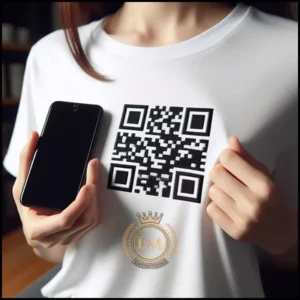
People will quickly learn about how great your clothing line is when they scan these patches with their phones. It makes it easy for them to find out what makes your collection unique. It’s like a fashion adventure. Let’s transform the world of fashion!
Commercial Exhibitions:
Exhibitions are akin to superpower shows where companies interact with a wide range of individuals, including suppliers, buyers, vendors, and more. This is where you showcase all of the beautiful goods you’ve developed to meet a variety of requirements.
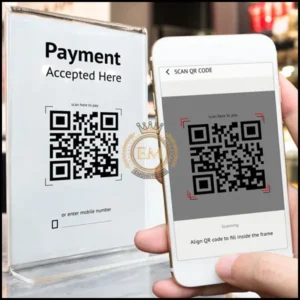
You can do exciting things at these events, including giving live demonstrations of your product’s functionality. Now comes the fun part: you can use QR code patches at both your booth (where you show off your stuff) and the places where people buy things.
These patch codes are similar to magical buttons. They can tell you what people are interested in by scanning them, like which items they like best. It’s like talking to your customers and getting to know what they want. Shows are like powerful places where you can meet new people and use QR codes to learn more about your buyers.
What Things to Consider When Designing Your Custom QR Embroidery Patches?
Customized embroidered QR code patches are a flexible and valuable way to get customers to know about your business and connect with you. You can iron these patches onto any kind of fabric or sew them on. This makes them great for clothing, bags, hats, and other accessories.
When you’re making your personalized QR code, here are some things to keep in mind:
- Choose the right size and placement for your patches: QR codes should be big enough to be scannable but not so big that they are too much to handle. The product you are using will determine where your patches should be placed.
- Use suitable materials: Patches QR codes should be made from durable materials that will not break easily over time. This is very important if you put patches on things that will be washed or used outside.
- Partner with a reputable manufacturer: Find a designer who has previously worked with embroidery and QR codes. This will guarantee that your patches last and that the QR codes can be read.
Remember: For instance, you can hire a digitizer from EMdigitizing for embroidery patch digitizing. We’ll make sure that the design is of high quality and that the code can be read after embroidery. We also offer vector art services that can be helpful for high-quality QR code printing to increase brand awareness.
You can start promoting your business and connecting with customers as soon as your personalized embroidered QR codes are ready.
We also have a fantastic offer for all of our potential customers.
Exclusive Offer:
Are you in search of a top-notch solution for digitizing your embroidery designs? Look no further than EMdigitizing, your trusted partner in embroidery digitizing and vector art services, serving clients worldwide.
What’s great about EMdigitizing is they’re really fast and do a super job. You can get a free quote in less than 5 minutes. And guess what? If you’re a new customer, you’ll get a huge 50% discount on all their services.
This is an amazing offer; don’t miss out! EMdigitizing will make your embroidery designs look incredible. The easiest way to improve your embroidery projects!
Frequently Asked Questions:
Yes, you can embroider QR codes on many different surfaces, which makes them a flexible and eye-catching way to share digital information.
The cost of an embroidered patch can vary widely depending on factors like size, design complexity, and quantity. On average, a basic custom patch can range from $1 to $5 per patch, while more intricate or larger patches may cost $5 to $15 each or more.
To make your own embroidered patches, you’ll need to design your patch, select your fabric, embroider the design using an embroidery machine, and then cut the patch to your desired shape. Finally, you can attach a backing to make it ready for use.
The best fabric for making embroidered patches is typically twill or a similar sturdy, woven fabric due to its durability and ability to hold intricate embroidery designs effectively. Twill provides a stable base for vibrant and long-lasting patches.
Patches are typically more cost-effective than direct embroidery because they can be produced in bulk and easily applied to various items, whereas embroidery involves stitching each item individually, which can be more time-consuming and costly.
